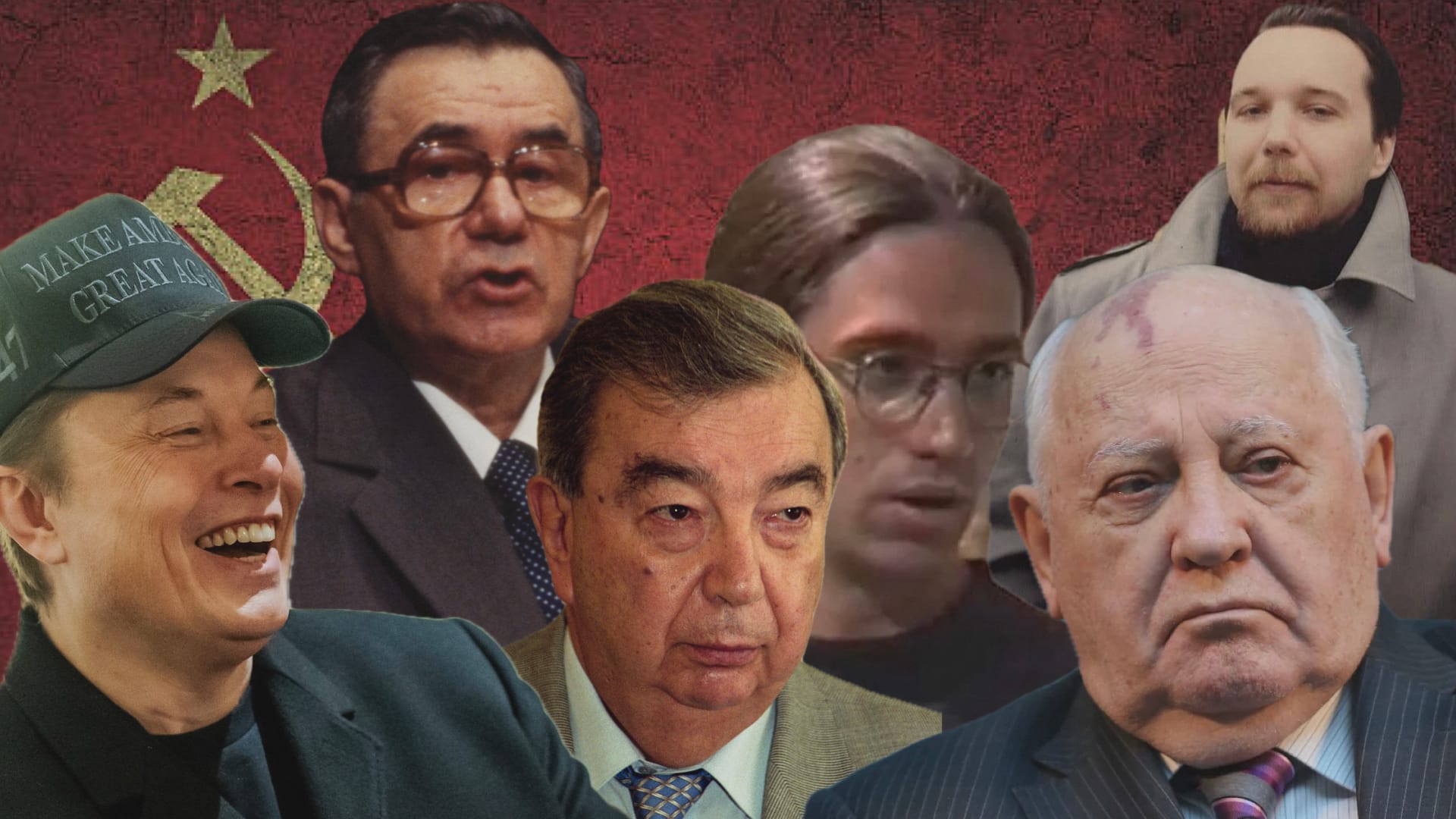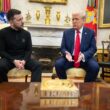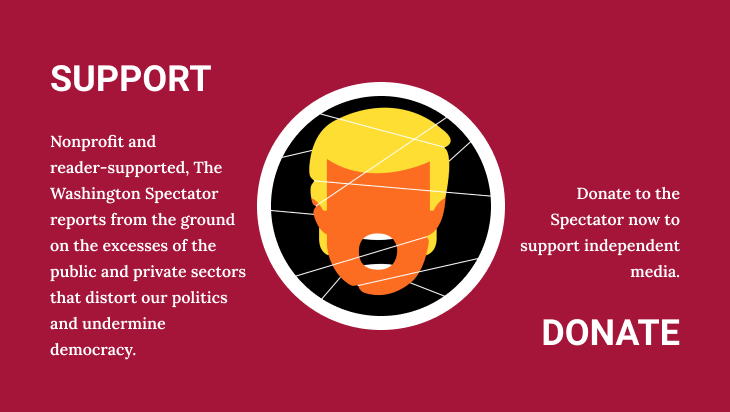The world is still reeling from the disastrous Oval Office meeting with Volodymyr Zelenskyy, leaving analysts and elected leaders asking both what it means and how we got here. While it’s clear the world is making a break with the past, few understand why. It’s tempting to seek simple, singular explanations, but the United States’ failure is the result of a thousand cuts, incurred over time. Here are some of the most productive lenses we have found to use when seeking answers — along with a few caveats — presented in no specific order. And we offer a general warning against “mastermind syndrome” — no one powerful set of forces is pulling the strings, and history is the product of many confounding interactions and cross-currents.
#1: Capture of the Presidency
The most direct cause of the about-face in American policy towards Ukraine, Europe, and NATO is the capture of the presidency by Russia. This is the result of a long term effort by Russian intelligence services, with support from China and various domestic factions. Henry Wallace, vice president in Roosevelt’s third term, was the first attempt at this effort. Trump, who was introduced to the problem of nuclear proliferation by his uncle John, was later cultivated by Russian intelligence and backed him for president. Here’s more on that story.
#2: Project Russia as Offensive Tactical Plan
We have covered Project Russia, the popular book series published in Russia between 2005-2010 that outlines a specific strategy for undermining and defeating Western democracies. Branding them as “decadent,” they speak of defeating a “mind virus” with a combination of traditionalism and religion to achieve a supranational monarchy run by a handful of elite, unelected leaders. Project Russia, while mostly a tactical implementation of older Soviet strategies, offers a framework to “divide the world,” and the “side that is right, wins.” Importantly, authors of Project Russia are also connected to House Speaker Mike Johnson.
#3: Perestroika as Offensive Strategic Plan
Anatoliy Golitsyn, a former KGB officer, defected to the West in 1961. He went on to provide a series of warnings to the Kennedy administration and to the CIA, over the course of decades. Some sought to detract from his accounts by attacking his character and questioning whether he was a “real” defector.
One advantage to living through turbulent times is that we gain the opportunity to validate predictive theories of history, and Golitsyn’s predictions hold up well. He argues that Perestroika, the strategy of reform that ostensibly led to the downfall of the Soviet Union, was not what it seemed, but rather a deliberate strategy to undermine the West. He argues that Perestroika was designed as early as 1959, based on Lenin’s New Economic Policy of the 1920’s, and that Mikhail Gorbachev was selected to execute its final phase.
His argument is convincing, as a statement of worldview and long-range reasoning, but falls short when one considers all the missteps, failures, and wrong turns of Russian leadership along the way. Not least is the slipped timeline — it has taken until 2025 to achieve what they hoped to achieve by 2000. It is also difficult to take seriously Golitsyn’s claim that the master plan is now being executed in service of communism rather than raw power and corruption. What Golitsyn nails is the the use of the “Primakov Doctrine” which argues for the use of nuclear blackmail against the West — “you’re gambling with World War III” — and also the role of Andrei Gromyko, who provides a connective through-line from Henry Wallace to Gorbachev and Trump.
As an expression of the KGB “id” (as now personified in Vladimir Putin) Golitsyn’s logic holds up remarkably well. Readers will recognize the same frustrating complaints about Western frames of analysis as insufficient for understanding and countering long-term Russian strategies.
#4: Gold Standard Revanchism and Distrust of Central Banks
For over a century, American conservatives have griped about the Federal Reserve, fiat currency, and “money printing,” because they don’t align with their ideas about wealth accumulation, hierarchy, and control of government through wealth. Russia and China share the same concerns, arguing that the Federal Reserve fuels dollar hegemony, giving the United States too much power and influence in the world. They share the same complaint about the European Union and its central bank. Putin likes to say that the Golden Billion (a theme also identified in Project Russia) lord over the rest of the planet, consuming all the resources for themselves and leaving everyone else behind.
Complaints over fiat currency have also fueled the creation of cryptocurrencies, which have become a major part of the second Trump term agenda. The goal is to destroy the dollar and move onto something new — perhaps a BRICS currency, or something yet to emerge. Sergey Glazyev, architect of the BRICS currency idea, has also written extensively about dollar hegemony and the desire to take down the United States through dollar collapse — a notion that he sees as inevitable (again mirroring Project Russia). Read Paranoia on Parade for the full history, and Glazyev’s book, “The Last World War: US to Move and Lose,“ for his perspective.
#5: Christian Nationalist Ideas About ‘Biblical Money’
Continuing with the question of monetary policy, there is a significant faction of American Christian Nationalists that also believe that the Federal Reserve, fiat currency, and paper money are evil, and that the US should return to the gold standard. In this they are not different from the secular libertarians described in point #4. But Christian ideologues like Gary North, Lance Wallnau, and even Steve Bannon to some extent have couched their gold standard revanchism as religious doctrine. They say that in order to become Godly again, the US must go through a catastrophic collapse marked by the fall of the fiat dollar, which then must be replaced by “Biblical money” based on the gold standard.
This strategy is outlined by Gary North and libertarian firebrand Ron Paul in what has become known as the “North-Paul” strategy. James Scaminaci III, a leading scholar of American Christian nationalism, has described it in great detail, and it’s well worth reading. Note, in particular, the clear alignment with Glazyev and Project Russia.
#6: TESCREAL and Russian Cosmism
It is imposible to talk about what’s going on now without mention of Elon Musk, Peter Thiel, Silicon Valley, the PayPal Mafia, and the various strange ideologies that have taken root in America’s tech industry. While Musk plugs into many of the points already listed (in particular his derision of fiat currency), we must also mention TESCREAL, an acronym coined as shorthand for Transhumanism, Extropianism, Singularitarianism, Cosmism, Rationalism, Effective Altruism, and Longtermism — a mouthful, to be sure.
While TESCREAL has come somewhat off from its peak with the jailing of Sam Bankman Fried, a principal advocate of Effective Altruism, it is still a factor driving “ends justify the means” arguments for space travel, against democracy, and for becoming a “multi-planetary species.”
Russian Cosmism is also very important for understanding Russian nationalism, more esoteric drives towards space exploration, and Musk’s sources of inspiration.
#7: Eurasianism and National Bolshevism
Much has been written about Aleksandr Dugin, the eccentric Russian geopolitical theorist. Dugin is what historian Marlene Laruelle calls a “doctrinal entrepreneur,” sifting through deep currents of Russian grievance to find frameworks fit for export to a broad network of contacts throughout Europe and the United States in service of his goals, which are roughly in line with those of Project Russia, Glazyev, Putin, and Bannon. Dugin has helped advance the concept of Eurasianism, and helped found the National Bolshevik party in 1993, a syncretic “red-brown” alliance combining Nazi ideology with Bolshevik methodologies, drawing on writers like Ivan Ilyin, Oswald Spengler, and Francis Parker Yockey for inspiration.
One can argue over whether Dugin is an originator of ideas or a mid-level wholesaler, but his role as a transmission belt for Russian grievance globally is undeniable.
#8: Eugenics and Nazi Ideology
Mike Godwin, an attorney and author famously said in 1990, “As an online discussion grows longer, the probability of a comparison involving Nazis or Hitler approaches one.” This maxim, now known as Godwin’s Law, now applies writ large across the entire media spectrum. It is tempting to compare Musk, Thiel, Trump, Dugin, and anyone else to Hitler and the Nazis, and to look towards that regime for hints as to what’s next — as if there is just one such playbook, or that the Nazis represented the eternal nadir of human evil. Here is a warning: because of modern technology, things can get much, much worse — and facile, clichéd comparisons to the Nazi regime weaken otherwise sound arguments.
That said, Musk, Thiel, and many in Silicon Valley have been inspired by many abjectly racist and sexist philosophies that also inspired the Nazi regime. Likewise, the Nazis were also inspired by theosophy and other occult ideas that appear across the various milieus we have cited. At the core of Eugenic thought is the desire to impose a “natural” hierarchy — with an elite at the top and everybody else fulfilling their role as dictated by their IQ, breeding, and life circumstance. This runs counter to ideals behind pluralistic, egalitarian democracy, but also mirrors the rigid structure of apartheid South Africa, which shaped Musk, Thiel, David Sacks, and others in their circle. This is also where Jeffrey Epstein, Charles Murray, and the Pioneer Fund fit into the broader picture.
#9: Curtis Yarvin, Neoreaction, and Dark Enlightenment
Blogger and software engineer Curtis Yarvin has been influential in Silicon Valley circles, calling for the replacement of democracy with a “monarchy” led by an omnipotent CEO-king. He has also called for the replacement of nation states with a “patchwork” of competing jurisdictions, each with their own visionary leadership. These mini-states would “compete” for the business of citizens, each offering their own mix of services. According to Yarvin, “If residents don’t like their government, they can and should move. The design is all “exit,” no “voice.”” It is expressly anti-democratic. The inspiration comes in part from people like Lee Kuan Yew, who designed Singapore as a libertarian haven.
America 2.0 recently broke news of memos from anonymous sources formerly connected to the Neoreactionary movement expressing concerns about Yarvin and his influence on Silicon Valley and Musk, in particular. Read those memos (or listen to the audio summaries provided), especially as they relate to the TESCREAL ideologies mentioned earlier.
#10: The Network State Movement
If Yarvin provides a blueprint, the Network State movement is about praxis. Championed by Yarvin ally Balaji Srinavasan and Patri Friedman, the Network State concept aims to build on older ideas of Libertarian Exit like seasteading, by moving the idea of country formation into the virtual realm. All of this, of course, is rooted in the idea of upending existing nation states and bringing about libertarian utopia. We have covered these ideas extensively, and importantly, there are Network State connections to Trump’s designs on Greenland, Panama, and Gaza.
#11: Technocracy
In the wake of the Great Depression, many economists and engineers were left asking the question, “what if capitalism doesn’t work?” Thorstein Veblen, the famed economist, led a circle of thinkers obsessed with this problem and attracted the attention of Howard Scott, a charismatic entrepreneur who formed Technocracy, Inc. to test Veblen’s ideas. With colleagues, he explored many avenues for more efficient management of resources and governance. Among his followers was a Canadian chiropractor, Joshua Haldeman — Elon Musk’s grandfather. Haldeman was arrested on grounds of trying to overthrow the Canadian government, and later renounced the movement. But given Musk’s arc, Scott’s designs for a North American Technate, and Musk’s formation of United States of America, Inc., many wonder if Musk is following the Technocracy playbook. Whether he is or not, technocratic ideas from Veblen, Scott, James Burnham, and Frederick Taylor have been broadly influential in both Russia and the United States. You need to understand technocracy.
#12: Crypto Capture of Elections
The cryptocurrency industry spent at least $200 million on the 2024 US elections — more if you count Musk’s personal $290 million expenditure — far exceeding spending by oil and gas interests. If left unchecked, we have entered a phase where crypto interests are likely to determine primary elections and electoral outcomes at the exclusion of all others. The European Central Bank wrote an excellent analysis with this call for regulating Bitcoin: “Failing to do so could skew election results in favour of politicians who advocate pro-Bitcoin policies, fuelling the division of society.” This same admonition applies broadly across multiple cryptocurrency frameworks. Assuming we do have elections in 2026, will their outcomes be effectively predetermined by crypto interests? We already see signs of trouble, with Trump announcing plans to buy various crypto coins with treasury funds.
#13: Capture of Institutions and Media
It is impossible to talk about what’s happened to the United States without mentioning Citizens United, the fateful 2010 Supreme Court decision enabling the unfettered conversion of cash into political outcomes. Beyond this, it is obvious that American counterintelligence capacity has been routed and rendered ineffective. Institutions like the FBI and CIA that should have protected us from capture have failed to do so (in part due to corruption), and the best way to understand that is as an internal conflict between factions — some who wanted to protect us from capture, and some who looked the other way, or helped it advance. We are the worse for it, and Nancy Maclean’s “Democracy in Chains” outlines how we got here through a series of what she describes as a “series of interrelated plays” that incudes capture of the courts. And obviously, our media ecosystem has been gutted, and monopoly control by the wealthy is not serving the interests of pluralistic democracy.
Final Thoughts
There are many other forces one can cite, and we could further explore the broad network of global interests that have aligned to attack America’s leadership position in the world. A long list of countries, from China to Israel to Saudi Arabia, Turkey, Qatar, and Iran, all have active roles in what’s been unfolding, and everybody has their own preferred angle. Political division, extremism, organized crime, lack of education, and relentless information warfare have been constants, as well.
Also implicit across every angle explored here is the primacy of oil, gas, and other extractive industries. The end result is a laissez-faire approach to energy, mining, cryptocurrency, and the privatization of governance. With no effective government left to regulate industry, we can expect unbounded effects on climate and the environment, with Putin’s Russia as a primary beneficiary.
One more caveat: it is a grave error to view Trump, Putin, Musk, or the others merely as grifters — or greedy, or motivated by profits, or only wanting to benefit from government contracts. Theirs is a bid to remake the world; they want power and the chance to impose their worldview onto everyone else. Second, they don’t think money (in the form of fiat currency) is real. Their goal is to replace fiat currency with an entirely new global financial order, and a supranational monarchy to match. For example, Musk wants to use Starlink at the FAA to capture the global aviation system, not score some measly government contract. It’s time to think bigger.
Dave Troy is an investigative journalist covering the intersection of technology and democracy. With a background as both a tech entrepreneur and historian, he brings his unique perspective to analysis of geopolitics, information warfare, and other current events. He is currently the publisher and editor of America 2.0, a news site focused on the future of democracy in America and around the world. Dave speaks frequently at conferences on information warfare, and hosts the podcast Dave Troy Presents.







0 Comments